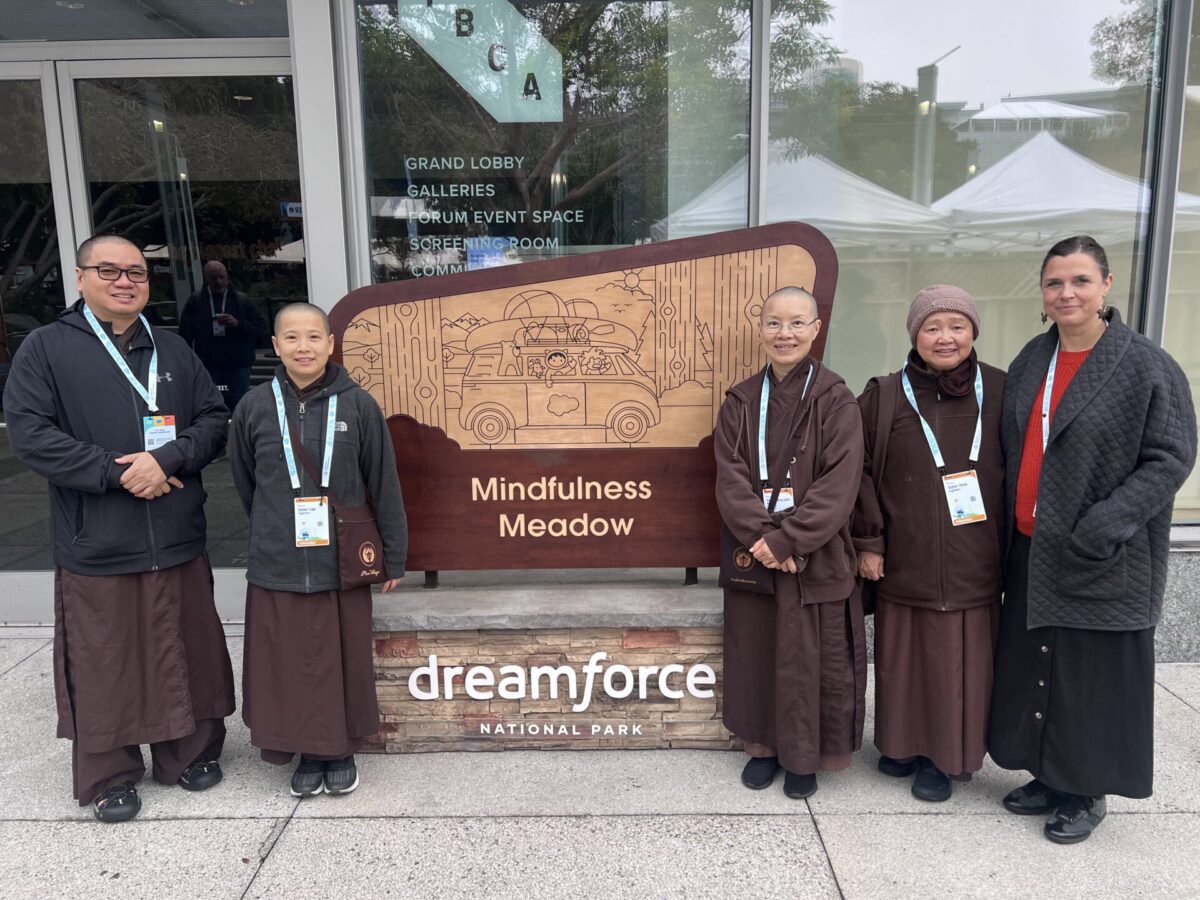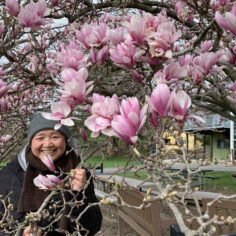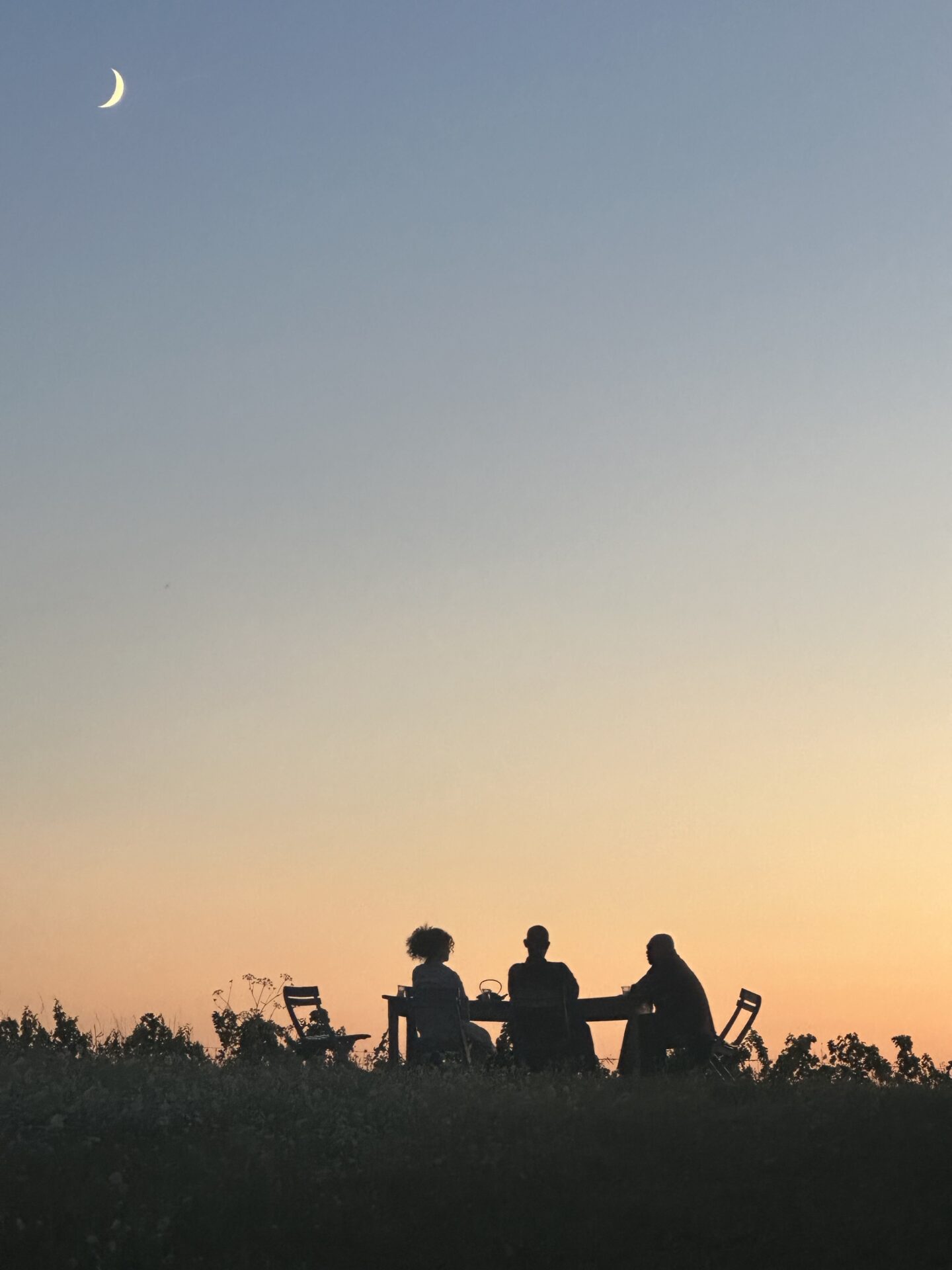Sister Hoa Nghiêm expresses gratitude for the support to build the new nunnery at Blue Cliff Monastery and teaches about practicing in “the AI era.”
By Sister Chân Hoa Nghiêm on
Sitting in the quiet room, closing my eyes and breathing deeply, I feel peace filling my body and mind. This is truly a loving spiritual home. A few days after I returned from Vietnam,
Sister Hoa Nghiêm expresses gratitude for the support to build the new nunnery at Blue Cliff Monastery and teaches about practicing in “the AI era.”
By Sister Chân Hoa Nghiêm on
Sitting in the quiet room, closing my eyes and breathing deeply, I feel peace filling my body and mind. This is truly a loving spiritual home. A few days after I returned from Vietnam, Sister Lân Nghiêm informed me that we had been granted a permit to build a nunnery, to be called Moon Lake Building. There is no greater happiness. The buddhas and bodhisattvas, especially the Blue Cliff Monastery land ancestors, have supported us. Moreover, I believe Thầy has always supported his students having a proper place to study and practice so they can sow seeds of love and understanding in the Eastern United States.
Today, on the way back from the meditation hall, passing Moon Lake Building I saw the roof’s iron bars being erected and workers covering the thin boards before installing the corrugated iron roof. The house is slowly rising, standing firmly under the sky and clouds. The workers are laboring like hardworking bees despite the cold winter. Soon, electricians, plumbers, and window and floor installers will come to do their work so the project will be completed by the fall of 2025. We are grateful to the workers, engineers, architects, lawyers, volunteers, and benefactors. With their hands, minds, and spiritual gifts, small or large, each person has contributed to the nunnery’s construction. This is truly a sangha project.

I remember when I returned to Blue Cliff Monastery in 2014, I had no intention of building anything. But looking around, I saw many buildings in serious disrepair while the number of meditators coming to the monastery was increasing. Initially, we needed to build a new, spacious, and warm dining room for winter. But just one year later, the original Moon Lake Building, where the nuns first lived, was about to collapse, even as White Crane Hamlet welcomed more and more nuns to join the hamlet to study and practice. We lacked housing and classrooms, so the nuns had to take rooms from guests. At that time, the nuns still did not have a proper nunnery; our accommodations, classrooms, and living areas were scattered everywhere. I realized we needed to build a nunnery so visiting practitioners would have more places to come and practice. Moreover, the new nunnery would be a peaceful and cozy place for the nuns to gather energy to return to their practice.
When I shared my intention and desire to build a new nunnery, many sisters responded positively. I still remember when I returned to my room, Sister Lân Nghiêm came to see me and said she had received the blueprints from a friend. She also promised to accompany me during the construction process. I was so happy to have the solidarity of many sisters in the community accompanying me to build a project that was not easy in New York state.
When we started planning to build, we worried because we had nothing. How could we start? I suddenly remembered Thầy saying to me: “Don’t worry my child, let the Buddha and the Patriarchs take care of you. Just focus on practicing!” The nuns and monks all encouraged me to raise donations. For my elder, Sister Chân Không, raising funds seemed very easy, but not for me. I have never requested anything from the public. I remembered the words of Zen Master Trúc Lâm: “Be happy in life. Depend on the causes and conditions when they come.” So, I practiced according to Thầy and the ancestral teachers’ teachings, letting conditions manifest by themselves. When I presented the matter to Sister Chân Không, she was very happy and supported us immediately. I felt that the conditions for building the nunnery were beginning to manifest.
Just last year, Sister Chân Không and the Deer Park abbess, Sister Trung Chính, came to lay the foundation stone, and now the new Moon Lake Building is taking shape day by day. I feel joy growing in me every day as the new nunnery manifests. How could the Moon Lake nunnery gradually take shape like this if it weren’t for Sister Chân Không’s loving support and the generous donors, friends, and relatives who extended their hands to contribute? The more I think about it, the more grateful I feel. So I often tell my younger sisters, “We must practice properly to be worthy of the love of our close friends and donors who have been and are extending their hands to contribute.” I am also very grateful to my younger sister Lân Nghiêm for working with the architects and engineers. I am even more grateful to the nuns who are here; each one gives a hand in caring for and supporting each other to operate and raise funds for construction of the new nunnery.
Recently, more and more young people—Vietnamese and Western—have been coming to our Days of Mindfulness at Blue Cliff. This year in particular, the sangha from the Northeastern United States have asked us to organize activities at the monastery at different times. In the past when Thầy came on his US tour, almost all of these practitioners attended the retreat with him. Now, their hair is gray, no one is young anymore, and some have passed away. Looking at them, my respect arises because they all practice very diligently.
In addition, on weekends or during winter and spring breaks, universities and high schools in neighboring states ask to come here to practice. Students say they feel very peaceful when they come. They temporarily stop using electronic devices such as phones and computers, get in touch with nature, meditate, and eat in silence. They are also taught by monks and nuns how to calm their stress, anxiety, and emotions. In March 2025, we will have about one hundred students from different universities join a weekend retreat.
Last September, I went with some brothers and sisters to guide mindfulness practice at Dreamforce—an annual event organized by Salesforce. After more than a week of guiding business people, I returned to the monastery for more than two days, but the image of Dreamforce lingers in my mind. How can I forget a place with thousands of people, bustling and noisy, suddenly becoming a peaceful place?

We had only three days to conduct retreats for entrepreneurs and people who work a lot with new technology. This year, Dreamforce focused on AI (artificial intelligence) technology. Our retreats had only a few dozen attendees. I felt sorry for them, but I couldn’t blame them because the place we conducted the retreats was not in the center of the event; few people passed by and knew about it. And not all entrepreneurs like to practice. The faces of those who came to us were full of fatigue and stress. We guided them to meditate with mindful breathing, relaxing their bodies and minds. After just a few minutes of sitting quietly and returning to their breathing, they shared that the stress from having to collect too much information about new technology in a very short time had eased. They expressed gratitude for our presence.
During the sessions, we guided them to practice mindfulness and apply it in daily life, as well as adapt it to the AI era, when people like machines to do all the work without using their own hands or brain. Interacting with them, I realized how important mindfulness practice is for businessmen as well as for the entire society.
In general, I see clearly that the Plum Village practice is very suitable for the information technology era because the practice is not rigid in its form. Any time, anywhere, we can stop for a few seconds to breathe, to dwell in our true home with mindful breathing. Even when working hard, we can stop and return to our breathing. Just ten breaths and we will feel our mind’s tension ease. They listened very attentively and seemed interested. I told them to come back and practice and miracles would appear.
I also see the importance of monastics in American society. That is why every year Salesforce invites the Plum Village Sangha to come for a few days and guide them in their practice. I think that, as a monastic, I must do the work of a monastic to liberate myself and to help society. Thầy, when founding the School of Youth for Social Service, said, “How can we sit still and practice for ourselves while the country is at war, and the people are poor and suffering?” That was decades ago during the Vietnam War, but is it different now? Many people around us, especially young people, are suffering. They need to be guided to the bright path instead of going down the dark path. This society that seeks material comfort is full of traps. Without mindfulness, without practice, those external glitters will turn into hell in the future.
Thầy’s wish is to bring the Dharma to the West. We also hope that Blue Cliff Monastery will be a place where lost people have the opportunity to come to practice in order to transform their suffering and find their true home.


